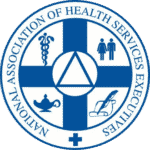In the realm of FQHCs, the adage ‘No Margin, No Mission’ takes on profound significance. But what does this mean for a community healthcare provider?
A recent Forbes article explored the adage “no margin, no mission” in healthcare. The author explored this idea, moderately criticizing ‘for profit’ healthcare organizations that seem to recognize they are providing a service and must be paid for it. The article concluded, “Put simply, margin should be a means to achieve an organization’s mission—not the mission itself.”
But how does this phrase even apply in the high volume, low margin world of community healthcare? Certainly, while not every FQHC is a pauper, these organizations are mandated to provide low or no-cost care to anyone who qualifies. FQHCs serve as vital safety nets, offering comprehensive healthcare services to underserved and vulnerable populations. However, FQHCs must grapple with financial sustainability to effectively fulfill their mission. This article delves into the meaning of “No Margin, No Mission” in FQHCs. It explores the challenges and strategies associated with balancing financial viability and the commitment to the mission of providing accessible, high-quality care.
Understanding “No Margin, No Mission”
“No Margin, No Mission” succinctly encapsulates that financial stability is essential for any organization, including FQHCs, to carry out its mission effectively. In the context of FQHCs, the task is to provide comprehensive healthcare services to medically underserved communities, regardless of patients’ ability to pay. Federal funding, grants, and reimbursements for Medicaid and Medicare services support this mission.
Challenges Faced by FQHCs
FQHCs often rely on a patchwork of funding sources, which can create financial uncertainty. Changes in federal or state policies, grant cycles, or reimbursement rates can significantly impact their financial stability. There are three mission-based challenges that FQHCs commonly face that cause margin instability. These include:
- FQHCs serve populations with complex healthcare needs, including many uninsured or underinsured individuals. Providing care to these patients can be costly, and reimbursement rates may only partially cover expenses.
- FQHCs also face challenges in recruiting and retaining qualified healthcare professionals. Competitive salaries are essential to attract and retain skilled staff, but this can strain financial resources.
- Keeping up with technological advancements and maintaining healthcare facilities requires significant investments, which can strain budgets.
Can these organizations find a balance between their mission of serving complex cases in low-income populations while finding the funding to stay technologically ahead—and somehow attract the best qualified clinical and administrative staff? The reality is that for-profit hospitals struggle with some of these same issues. How can FQHCs overcome these struggles?
Strategies to Balance Margin and Mission
FQHCs genuinely live the idea that they cannot achieve their mission without a solid financial bottom line. The concept of FQHC fiscal responsibility is not an oxymoron—and it requires new revenue-generating strategies to achieve better margins. At the same time, these organizations must do more to achieve their safety net mission:
- Diversifying revenue streams: FQHCs can reduce their dependence on a single source of funding by diversifying revenue streams. This approach may involve expanding services, seeking additional grants, or exploring partnerships with other healthcare providers.
- Optimize billing and reimbursement: FQHCs can improve their financial health by optimizing their billing and reimbursement processes. Ensuring accurate coding and billing for services provided can maximize revenue.
- Financial sustainability planning: Developing a long-term financial sustainability plan is crucial. FQHCs should engage in strategic planning that considers future funding changes and challenges.
- Community engagement: Building strong ties with the community can help FQHCs secure local support, donations, and partnerships that contribute to financial stability.
- Cost-effective care delivery: FQHCs can focus on delivering cost-effective care through preventive services, chronic disease management, and efficient healthcare delivery models.
- Advocacy and policy engagement: FQHCs can advocate for supportive policies and engage with policymakers at the federal and state levels to ensure fair reimbursement rates and stable funding.
Margin + Mission is Possible
“No Margin, No Mission” underscores the critical importance of financial sustainability for FQHCs in providing accessible, high-quality healthcare to underserved communities. While the challenges are real, FQHCs can navigate these obstacles with a strategic approach, unwavering dedication, and a deep understanding of the unique challenges faced by FQHCs.
UHC Solutions is here to help. We are the nation’s leader in FQHC recruiting, keeping this difficult task in mind with every placement. Our team is proud to support your mission and margin by creating faster time-to-hire numbers, lowering recruiting costs, and reaching out to highly qualified candidates to serve your organization. Contact us today. We can help.




